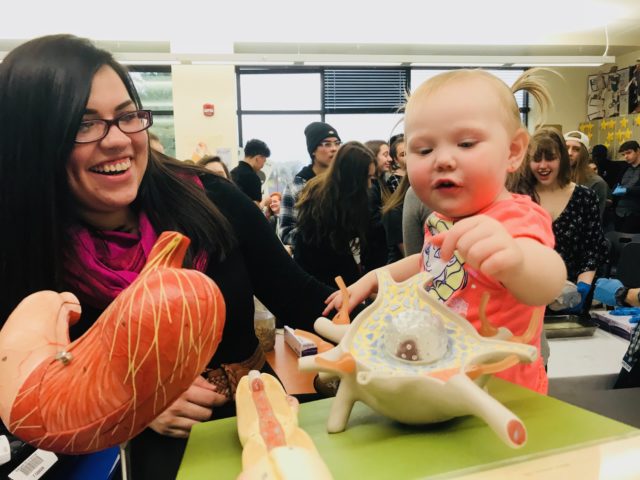We love visiting with Susie Ridgeway, a Human Anatomy and Physiology teacher, and her curious students at Henrietta Lacks High School in in the Evergreen Public School system near PeaceHealth hospital in the suburbs of Vancouver. We’ve been dropping by with brains, art and our Noggin volunteers for several years…
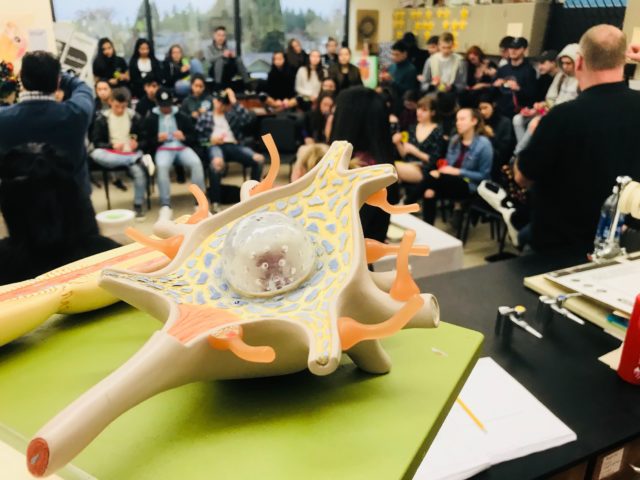
(We also love checking out their stunning hand-painted Somso neuron model..!)
LEARN MORE: Hella Bright at HeLa
LEARN MORE: Hippocampal hordes at HeLa High
LEARN MORE: Transmitters, Pesticides & Drugs at HeLa High
The questions we get are wide-ranging, thoughtful and in-depth, and this time ran the gamut from visual physiology and hallucinations to anti-depressants, cannabinoids, the opioid epidemic, sleep paralysis, caffeine, cutting, multiple sclerosis, lung cancer and nicotine..!

LEARN MORE about non-pharmacological approaches to anxiety & depression: Bathing your brain @ Velo
HeLa is named after Henrietta Lacks, a young woman whose aggressive cervical cancer cells were taken without her consent, and then sold and studied extensively by scientists around the globe. HeLa cells are among the most prolific and enduring human cells ever encountered. Research has led to advances in the treatment of cancer and other diseases, and people have made significant money. Yet many in Henrietta’s family lived in poverty, and only learned about these extraordinary contributions years later, long after she was buried in an unmarked grave…
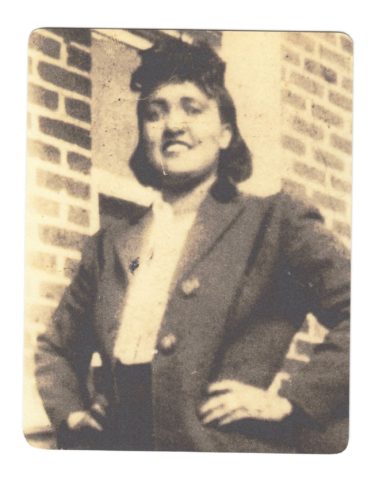
LEARN MORE: Overlooked – Henrietta Lacks
LEARN MORE: The Immortal Life of Henrietta Lacks, by Rebecca Skloot
LEARN MORE: NIH, Family of Henrietta Lacks Work to Advance Science, Protect Privacy
LEARN MORE: THE HENRIETTA LACKS FOUNDATION
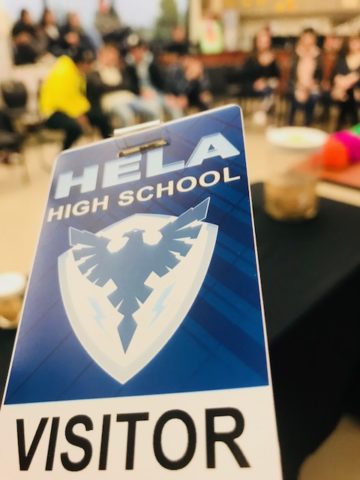

Lots of great questions this morning at HeLa High..!

Noggin introduced another accomplished crew of our knowledgeable volunteers, including Lelani Lealiiee, an NIH BUILD EXITO scholar from Portland State University, and Travis Christian, Jade Osilla, Natalie Stoner (and her scene-stealing daughter Lyric) and Aliese Poole, also at PSU. Iris Guttierez joined us from WSU Vancouver, along with artist Kanani Miyamoto (a graduate of PNCA) and Resource Council member Joey Seuferling…

So how does the eye work? Why are some people able to perceive more colors than others?
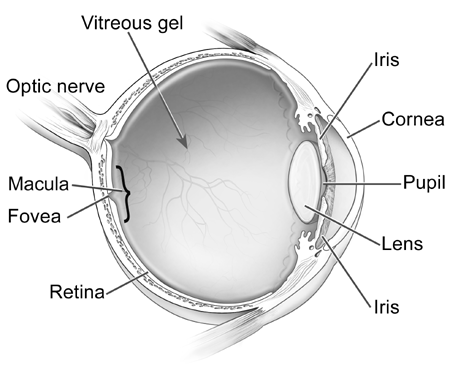
Learn More: National Eye Institute
Our eyes are extraordinary. We are visually driven primates, and most of us rely on the remarkable ability of specialized sensory neurons called photoreceptors to capture narrow wavelength ranges of electromagnetic energy reflected from the people and objects in our environment…

These photoreceptors, located in the retina, come in various forms, including a long rod-shaped version containing lots of chemical pigment capable of absorbing even small amounts of EM radiation within the range of visible light. These rod cells (about 90 million/eye!) thus operate best in low light conditions, and are clustered outside a central region of the retina known as the fovea. Rod cells help us see at night, and because so many of them are wired up together to single optic nerve outputs, they respond well to moving stimuli on either side…

A sculptural interpretation of a rod cell. Rod cells convert light (EM energy, within a narrow range) into a neuronal response. Rods are very sensitive to light, since they contain more pigment in many membranous discs (the discs in this sculpture are recycled turntables :). Artwork by Portland artist Matt Cartwright...

Cone cells, in contrast, are less numerous (4.5 – 6 million/eye), and have shorter, cone-shaped segments containing the photopigments. They are packed in tightly at the fovea, with each linked to few optic nerve cables. With less pigment to capture radiation, they respond best in daylight, and are essential for high acuity vision. We need cones to recognize objects. Most of us have three distinct types of cone cells, each expressing a pigment that maximally absorbs a different wavelength (which generally correlates with our perceptions of the colors red, green and blue).
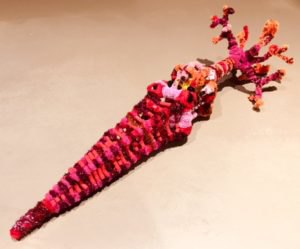
Red Cone cell in pipe cleaners
Some people are born with only two functional cones, and have dichromatic vision. Or they may have one functional cone cell, and be monochromatic. With fewer cones, they are less able to discriminate wavelengths, and are colorblind. Other people may inherit pigment alleles that maximally absorb somewhat different EM energy, and thus detect light differently, too.
LEARN MORE: Color vision deficiency
LEARN MORE: Facts About Color Blindness
TEST YOUR VISION: Ishihara Test
Artist Neil Harbisson was born color blind, but he implanted a device into his skull that converts the electromagnetic radiation of visible light (and more!) into vibrations. He now listens to “a symphony of color..!”
LEARN MORE: How a Color-Blind Artist Became the World’s First Cyborg
Some pigment genes are also X-linked, so women (who inherit two X chromosomes) may, in rare instances, express four different pigments, and thus have FOUR distinct types of cones! However most women with anomalous trichromacy (or tetrachromacy) do not appear to have any enhanced ability to discriminate color. The few who do, interestingly, appear to be those with some artistic training…

Peacock Tetrachromat painting by Concetto Antico
LEARN MORE: The dimensionality of color vision in carriers of anomalous trichromacy
We emphasized that even with three typical cone cells, what we detect is only a small sliver of the energy entering the eye, or the information-rich electromagnetic radiation all around us – with significant bias in daylight towards red and green-associated wavelengths and fewer blue-sensitive cones…
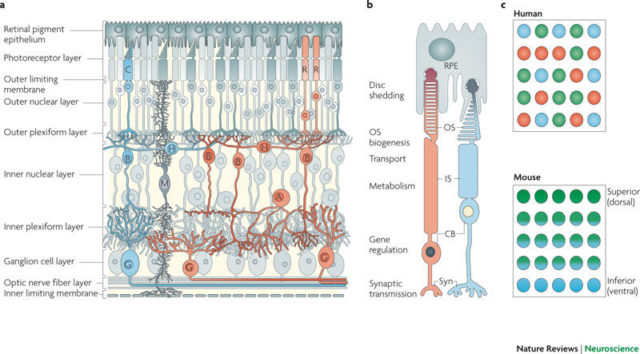
Retinal circuitry. Light passes through the multiple cell layers, particularly outside the fovea, before reaching those membranous discs on the rod and cone cell photoreceptors at the back!
LEARN MORE: Regulation of photoreceptor development & homeostasis in the mammalian retina
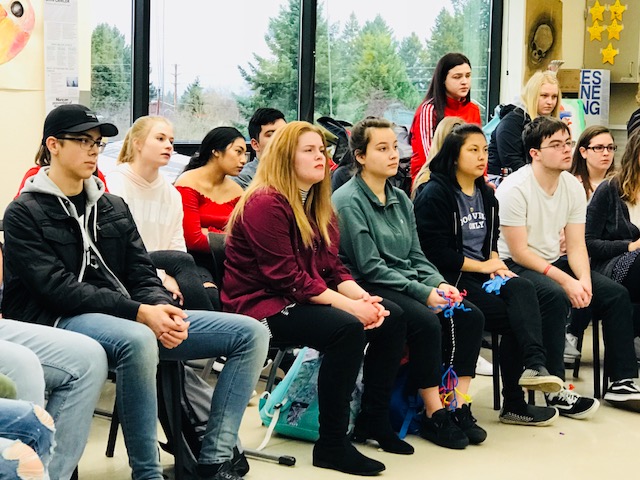
Visual perception, however, is different from sensory detection by retinal photoreceptors, and relies instead on networks in cortical areas of the brain. Pathways in the lower (or ventral) temporal lobes receive most of the cone-derived information from the highly pixelated fovea, and specialize in perceptions of what it is you’re perceiving, be it faces, bikes, or animals. These ventral temporal lobe networks are known as the what pathway. Visual information derived from peripheral rods heads primarily towards parietal lobe regions (through portions of the dorsal temporal lobe) to inform maps of your body about where objects are in relation to you. This is called the where pathway…
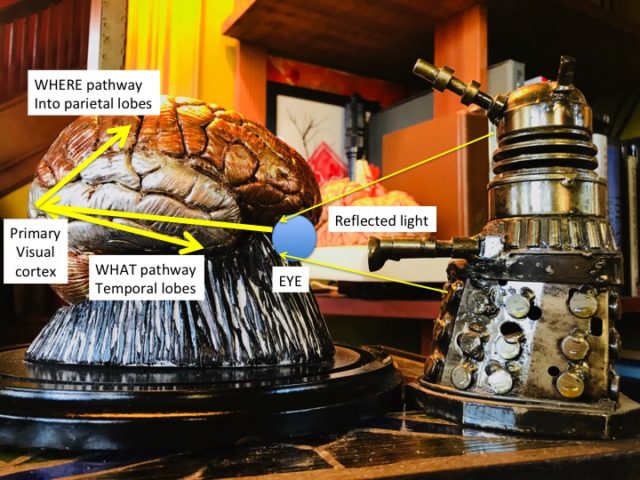
Development of these networks happens early in life, and requires our interaction with that EM energy to form. In fact, even brief light deprivation in infancy (e.g., from a cloudy lens, or cataract) can impair construction of cortical networks essential for perception.

Once past this sensitive development period, the cataract may be removed, and the photoreceptors may still respond correctly to light – but your neurons in cortex will no longer rewire in ways which will allow you to consciously perceive…

LEARN MORE: Development and Plasticity of the Primary Visual Cortex
Students were fascinated by this link between light detection at the retina and our usually related conscious perceptions of what we see. Yet sometimes, we noted, even with normally developed visual networks, we make perceptual errors, and might perceive something that isn’t there. For example, we asked, have you ever gone outside at night, and “seen” a raccoon? You literally see this clever animal, in all its furry, bandit-masked glory – but once you shine your iPhone light on it, it suddenly resolves perceptually into the branch or recycling bin it happens to be!

But what happens if your retina begins to lose photoreceptors, perhaps from a stroke in the eye, melanoma (which can occur in the eyes) or a condition known as macular degeneration? Interestingly, one common response is Charles Bonnet syndrome, where individuals begin to perceive objects, faces, cartoons and a host of other stimuli that are not present at all. They are blind, or going blind – and yet at times they inhabit an extraordinary world of visual hallucinations!
LEARN MORE: Charles Bonnet syndrome
LEARN MORE: Charles Bonnet syndrome: visual loss and hallucinations
LEARN MORE: Charles Bonnet syndrome—elderly people and visual hallucinations
There’s a disconnect between visual sensory detection and cortical networks essential for visual perception, and with disordered or missing input, the brain in some cases generates anomalous activity in temporal lobe networks that support vivid visual hallucinatory experiences! While Charles Bonnet is not a sign of additional dysfunction, it remains an under-reported syndrome, as many elderly people in particular are concerned about their mental state, or about the consequences of being mis-diagnosed with dementia or other serious disorders…
“You see with your brain, not with your eyes.” The late neurologist Oliver Sacks discusses Charles Bonnet syndrome

We answered many more questions in multiple classes with hundreds of HeLa students throughout the morning! And of course we made art, crafting our own brain cells out of pipe cleaners…


LEARN MORE: STEAM Art Projects
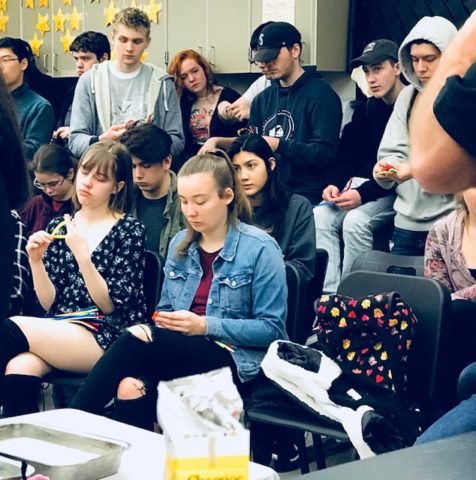

And we looked at brains – raccoon (which was really there!), ferret, chicken, pig, sheep, cat, rhesus monkey – and human!
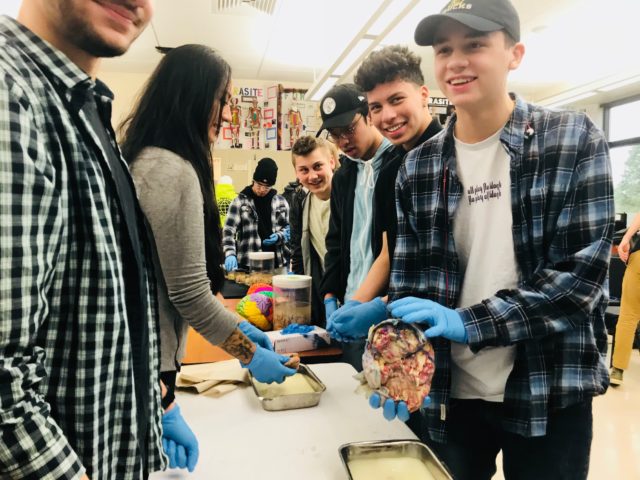


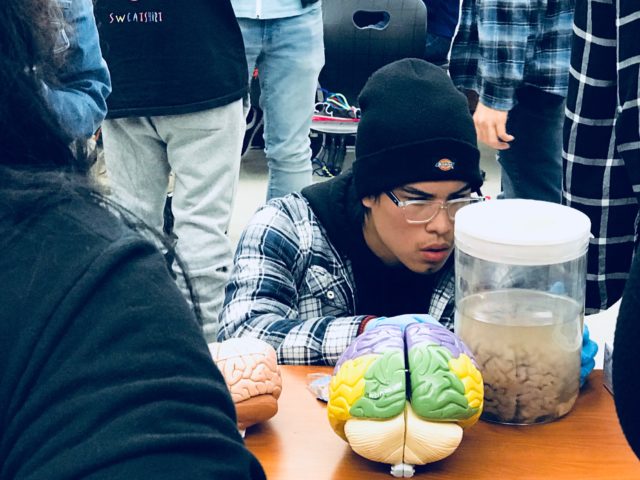

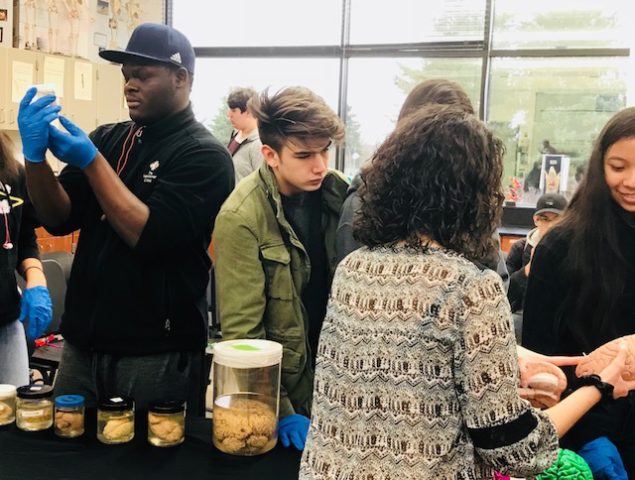
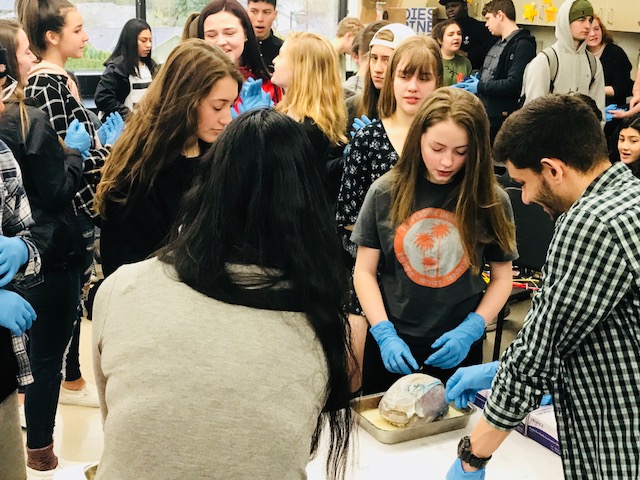

“Every act of perception is to some degree an act of creation, and every act of memory is to some degree an act of imagination.” – Oliver Sacks
From teacher Susie Ridgeway: “Thanks so much you were great as always!! Students had a fantastic time, and they loved the question and answer section.” Our thanks to Susie and the students at HeLa High for welcoming our noggins back to school!
